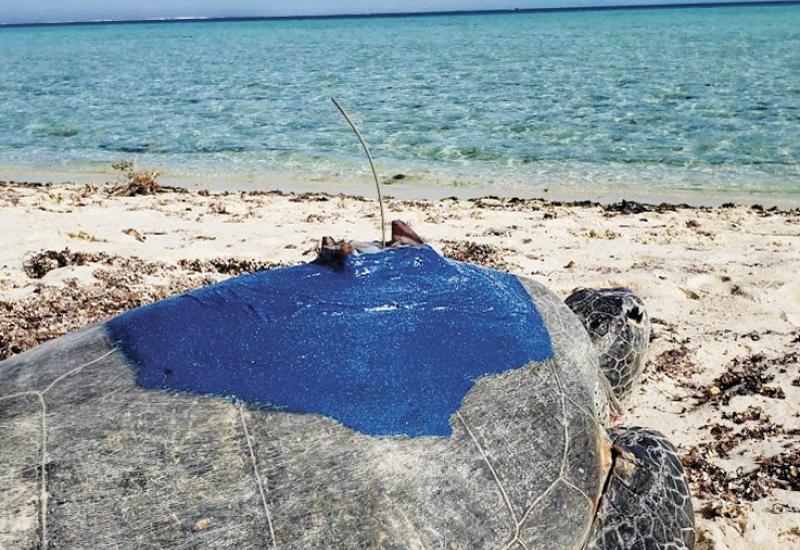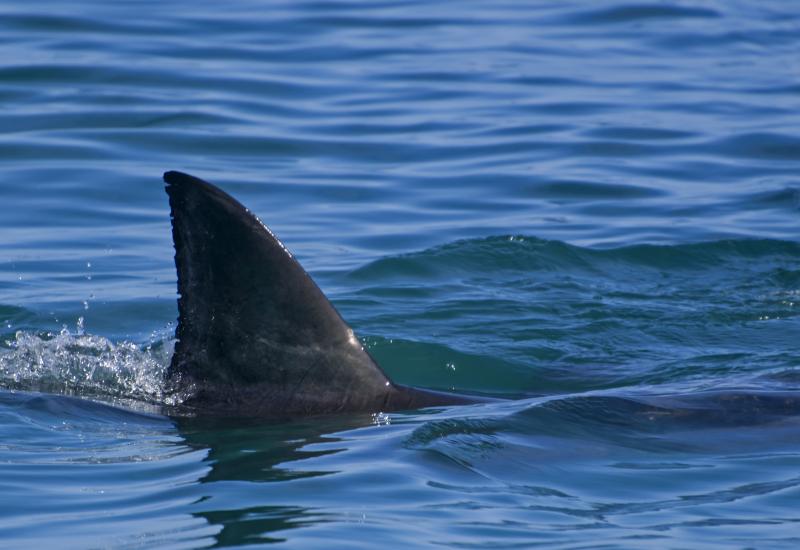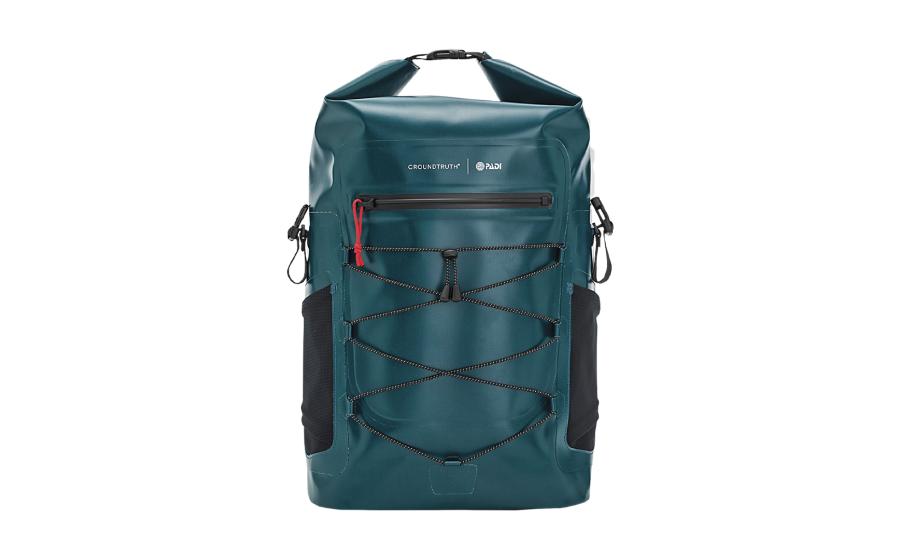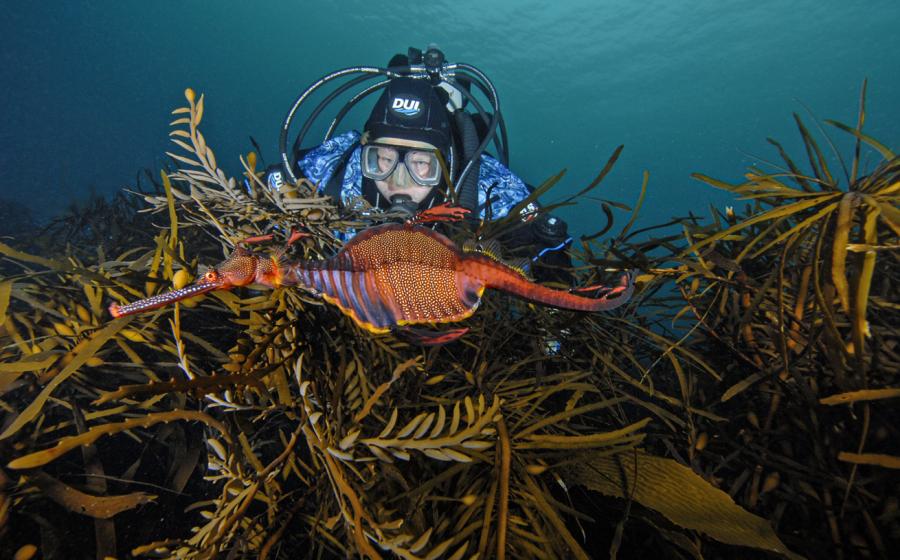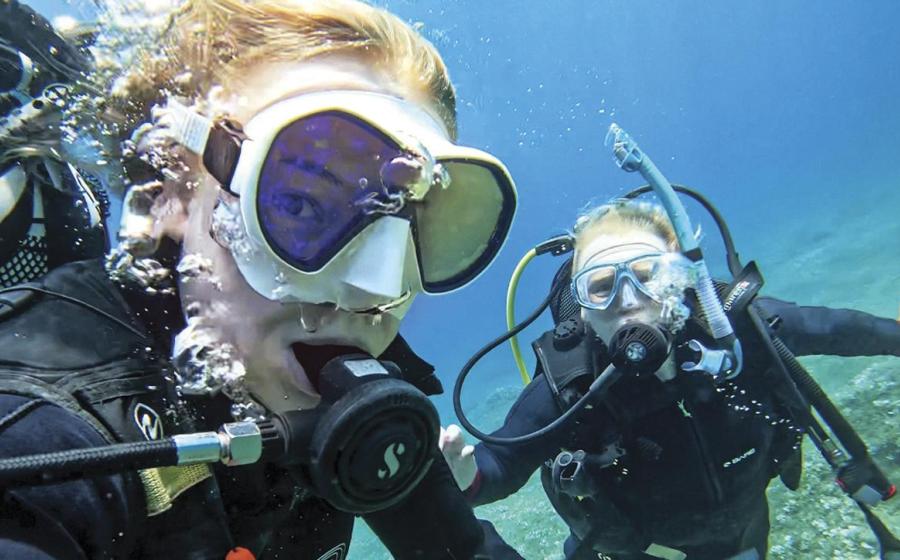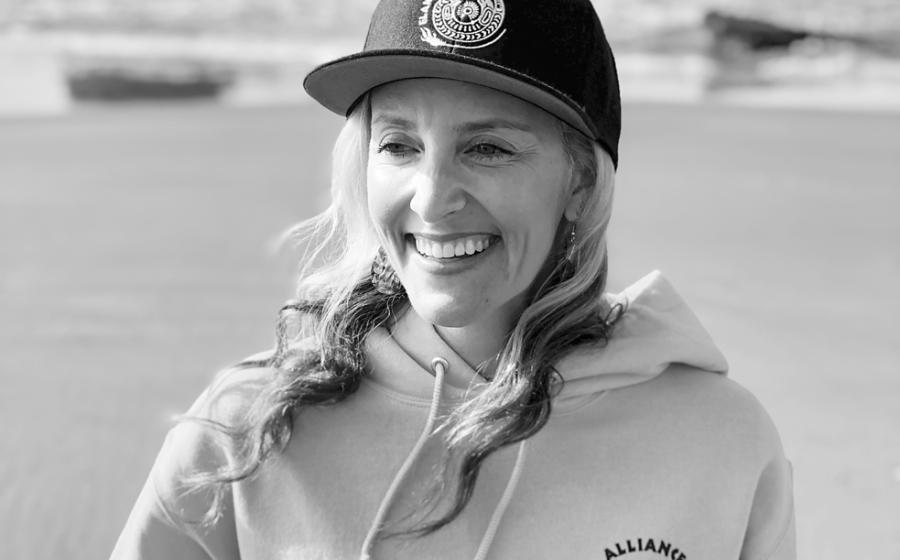The Legends and Heroes of Scuba Diving
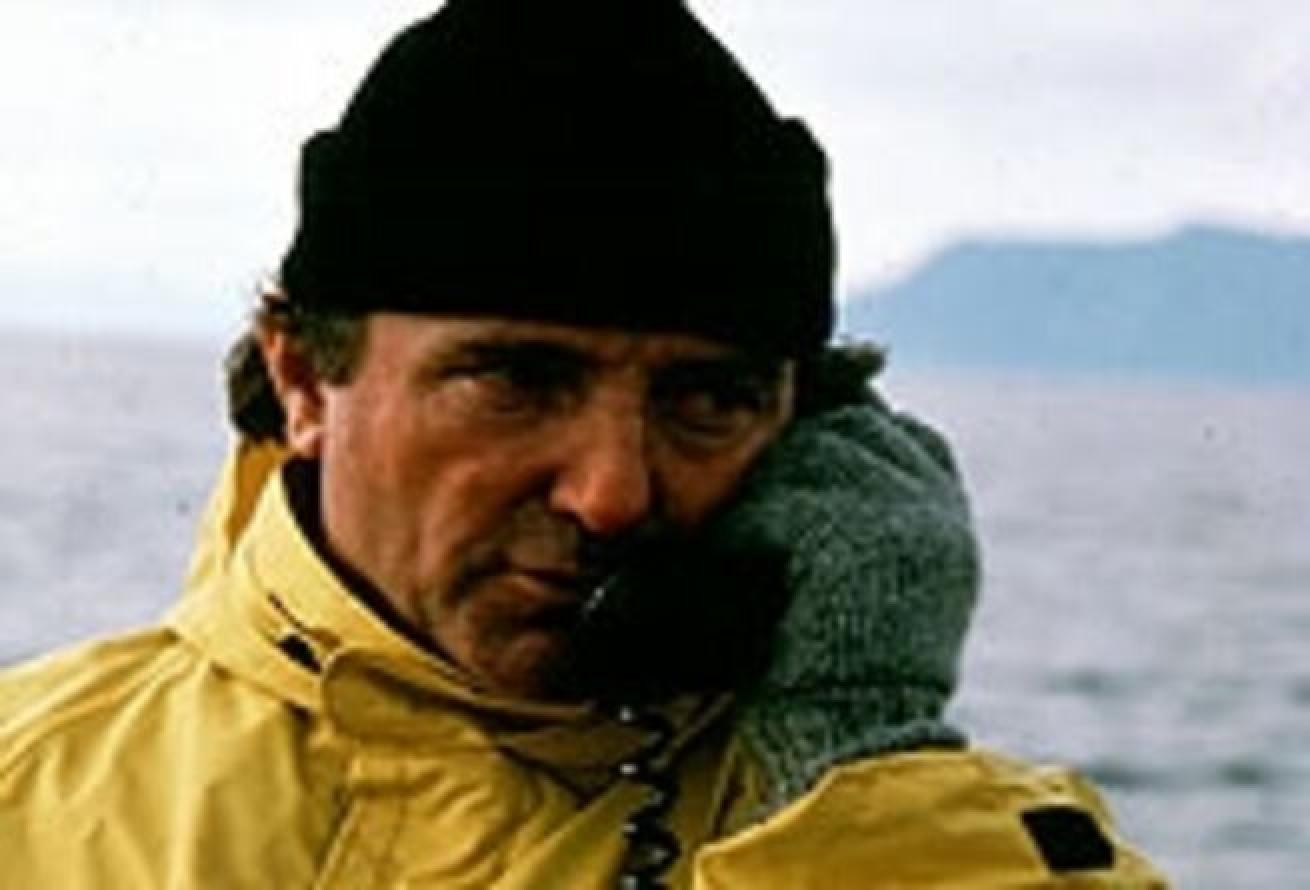
Courtesy Al GiddingsAll Giddings
Many scuba divers have left their mark on the scuba diving industry — and our oceans — with their contributions as photographers, filmmakers, explorers and educators.
Scuba diving is full of people who amaze, inspire, lead and earn our respect, which got us thinking — if we had to pick diving's greatest legends and heroes, who would make our list? Here's a sampling of divers who we think are deserving of hero worship.
The Underwater Photographers and Filmmakers
Jacques Cousteau called the ocean "the silent world." But nobody ever said it lacked anything when it came to visuals. These are the people who use their craft to showcase the ocean to millions of people who might not ever get the chance to explore it as scuba divers, and whose work has cast a light on what we need to protect and preserve.
Related Reading: Facing Fear With Nathalie Lasselin: On Embracing the Unknown
James Cameron
In 1997, James Cameron's Titanic not only set records for budget and box office, it continued a fascination with underwater exploration that this producer, director and screenwriter first touched on in The Abyss, and later explored further in the documentary Expedition: Bismarck, and the IMAX 3D film, Ghosts of the Abyss and the Academy Award-winning and nominated film Avatar. This body of work, along with his contributions to underwater film technique and ROV technology — explored with the same meticulous attention to detail that went into his first box-office hit, The Terminator — earned Cameron an honorary doctorate from The University of Southampton. Popular with filmgoers and explorers alike, he's done enough to fill two careers, leaving mere mortals wondering just when this guy sleeps.
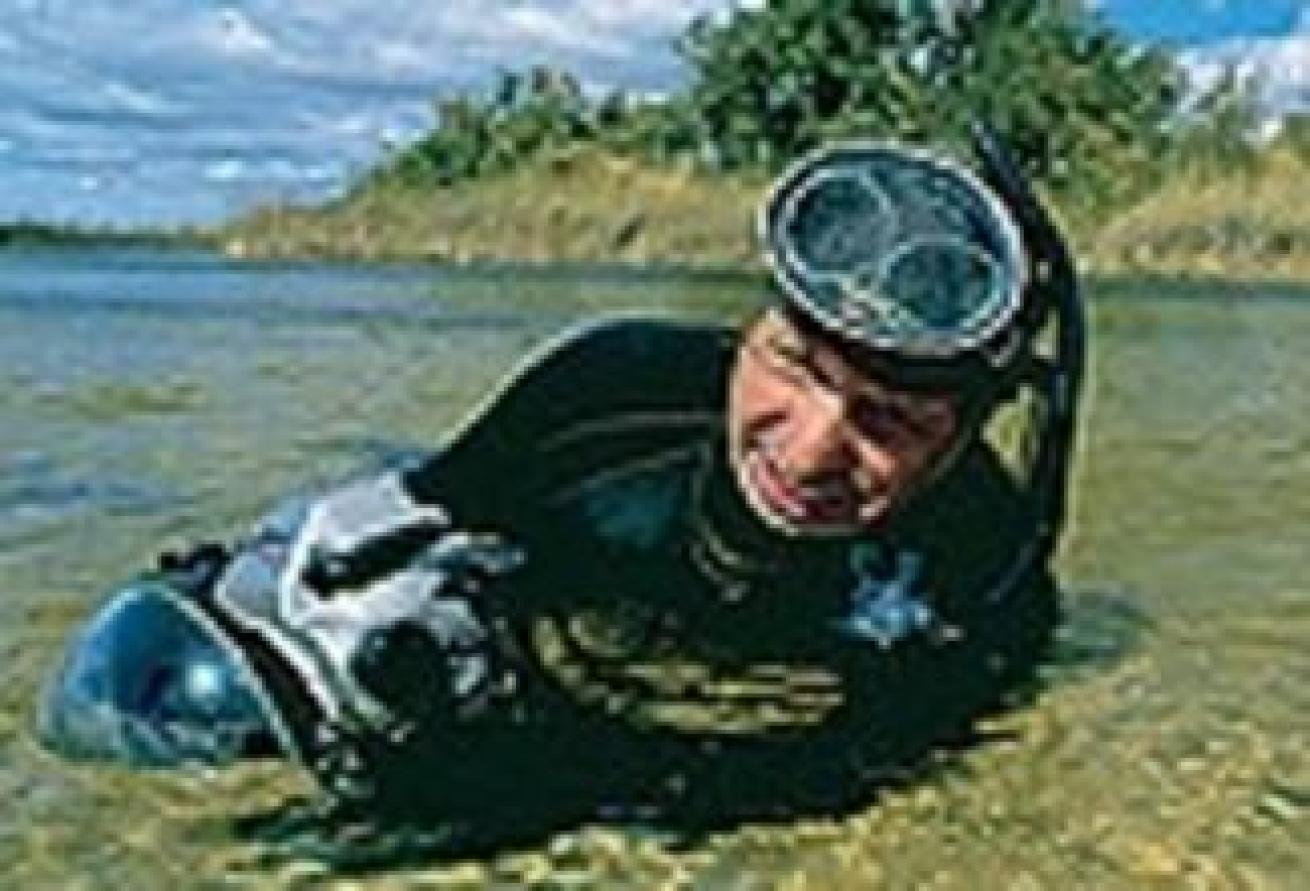
Courtesy David DoubiletDavid Doubilet
David Doubilet
Honored by National Geographic magazine as a Contributing Photographer-in-Residence, David Doubilet made his first underwater photograph at the age of 12. He used a Brownie Hawkeye camera and a housing cobbled from a rubber anesthesiologist's bag, borrowed from the hospital where his father worked. He has since shot more than 60 stories for National Geographic, has produced seven books, and is single-handedly responsible for putting the word, "majestic," into the vocabulary of underwater photography. He shoots the sort of photographs most of us would like to produce when we grow up — and if we find the right anesthesiologist's bag, we just might.
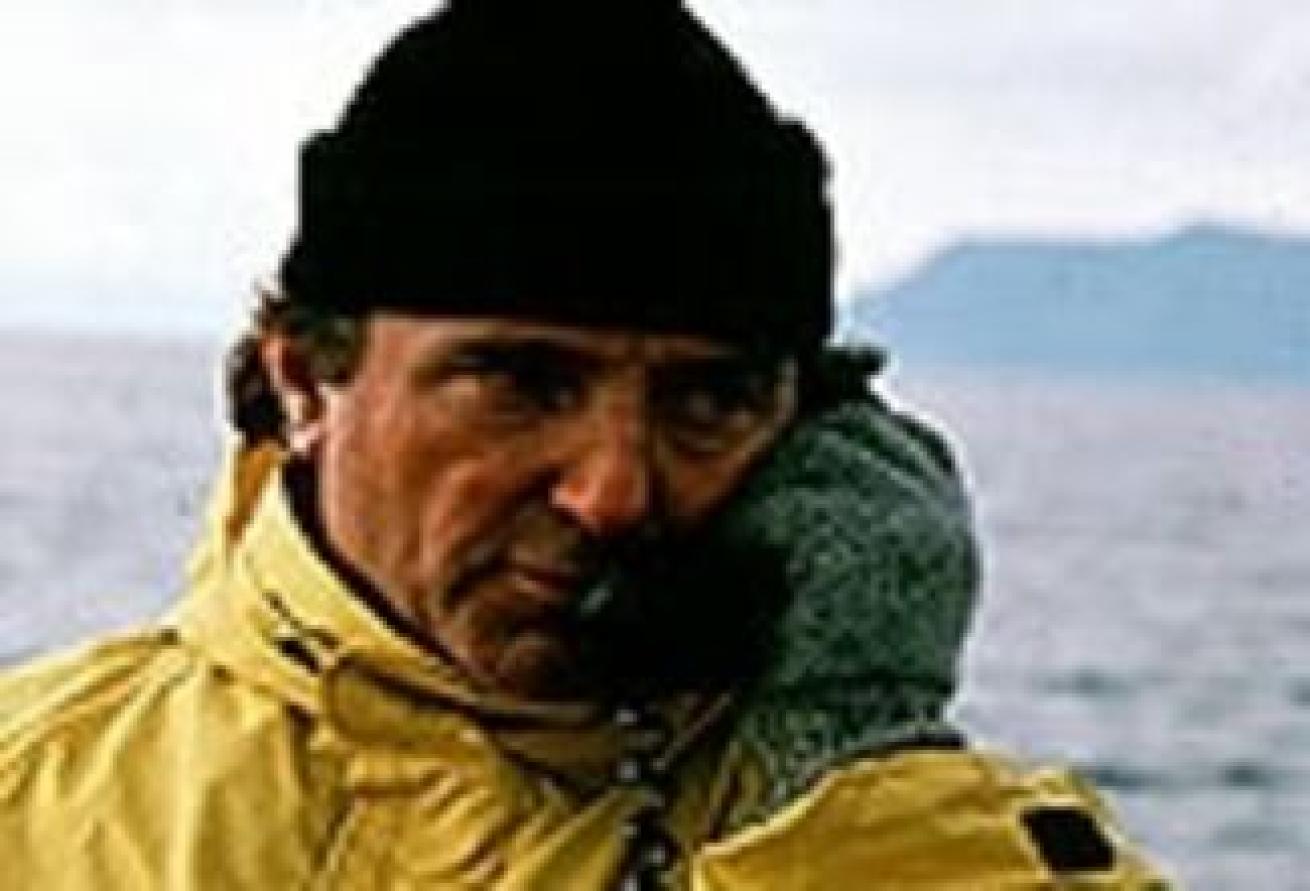
Courtesy Al GiddingsAl Giddings
Al Giddings
You can't help but admire a guy who has accumulated a grand total of more than two-and-a-quarter years of bottom time and still says he looks forward to every single dive. He has dived in both the Arctic and the Antarctic, and most places in between. But as prolific a diver as Al Giddings is, it's his work with still and motion pictures that makes him one of diving's living legends. With The Deep, Never Say Never Again, For Your Eyes Only and The Abyss among his cinematography credits, he's won four Emmys, designed many of the technologies he uses in his work, and says the advent of HDTV and digital image technology mean that his best work is yet to come.
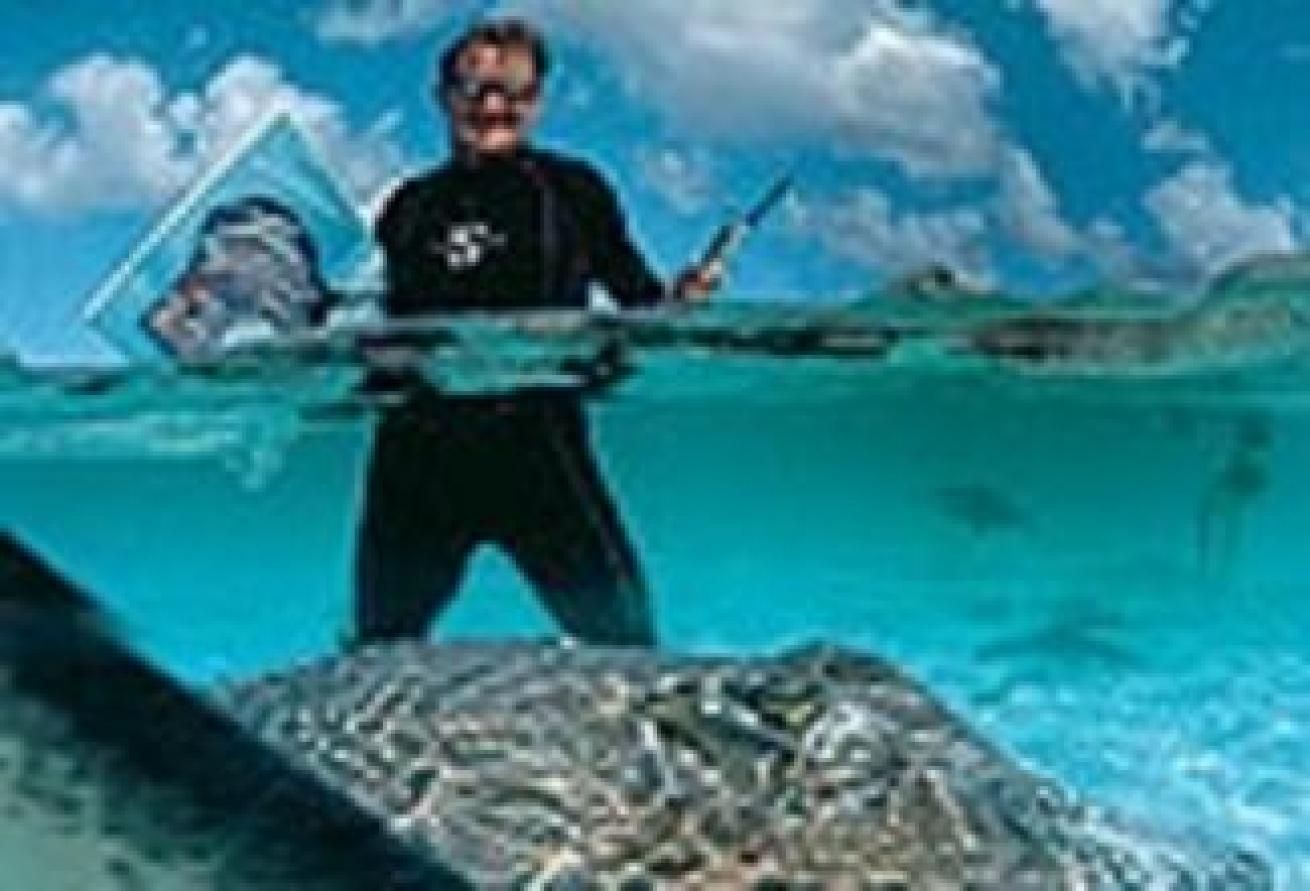
Courtesy Guy HarveyGuy Harvey
Guy Harvey
A self-taught artist who is also a biologist with a doctorate in fisheries management, Guy Harvey is known primarily as the most-recognized artist in saltwater sportfishing today. But the detail in his art is the result of untold hours of observation underwater on scuba and, as a diver and a professor of marine biology, his real passion is the conservation and enjoyment of ocean resources and stemming the depletion of pelagic fish. His efforts in that regard have ranged from developing and funding the Guy Harvey Research Institute to personally funding (and creating an underwater mural for) Guy Harvey Reef, the 25th ship sunk as part of the Pompano Beach artificial reef program. A 10th-generation English-Jamaican, he now lives and paints in Grand Cayman, continuing the research and work that have earned him the title of "the John Audubon of marine art."
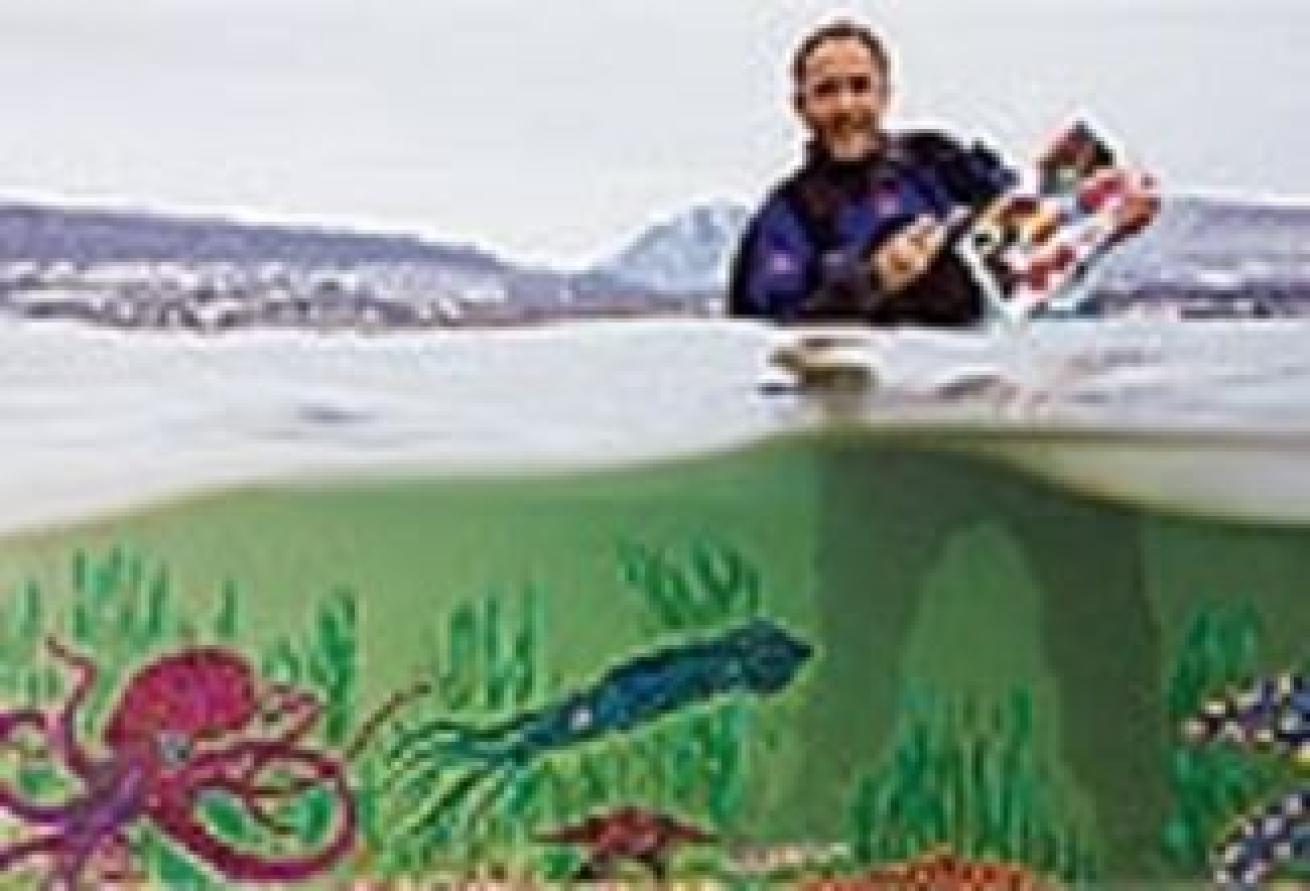
Courtesy RogestRogest, aka Ron Steven
Ron G. Steven
Known to the art world simply as "Rogest" and to kids everywhere as "Mr. Ronnie," Ron Steven's pointilist or "dotilist" method of painting is one of the most recognizable styles in marine art today. But the real essence of this businessman-turned-diver/artist is how he uses his art to communicate marine-conservation messages to ocean aficionados of all ages. Describing himself as "a combination of artist and diving pirate," Ron has donated artwork to O.W.U. Scholarship Society, Conservation International, Ocean Pals, Oceans for Youth Foundation, REEF, Catalina Conservancy Divers, W.W.F., CORAL (the Coral Reef Alliance) and the Marine Mammal Care Center in California. A natural educator and former diver instructor, Ron's favorite activity is working with the most influential group of people that there is when it comes to our ocean's futures: the world's children.
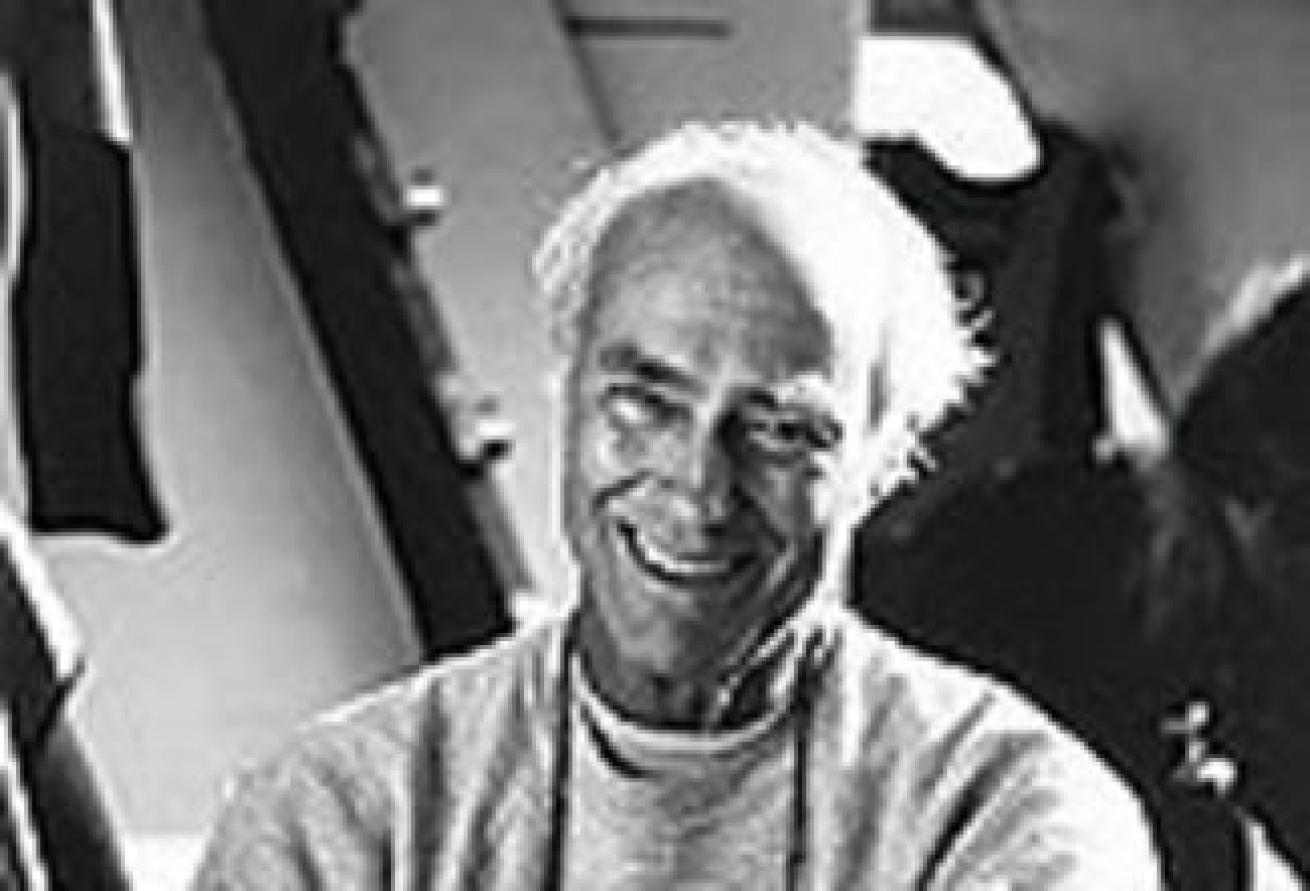
Courtesy Stan WatermanStan Waterman
Stan Waterman
Lots of underwater photographers create documentary films. Stan Waterman is one of the few to have had a documentary made about him (The Discovery Channel's The Man Who Loves Sharks). In the early 1950s, he acquired the first Aqualung regulator sold in the state of Maine, and by 1954, he was running one of the first dive operations in the Bahamas. His 1968 film, Blue Water, White Death, inspired countless other documentaries on sharks, and is probably single-handedly responsible for the creation of The Discovery Channel's popular "Shark Week." Five Emmys represent just a fraction of the awards he has received for his work; he's the person most underwater videographers would like to be when they grow up.
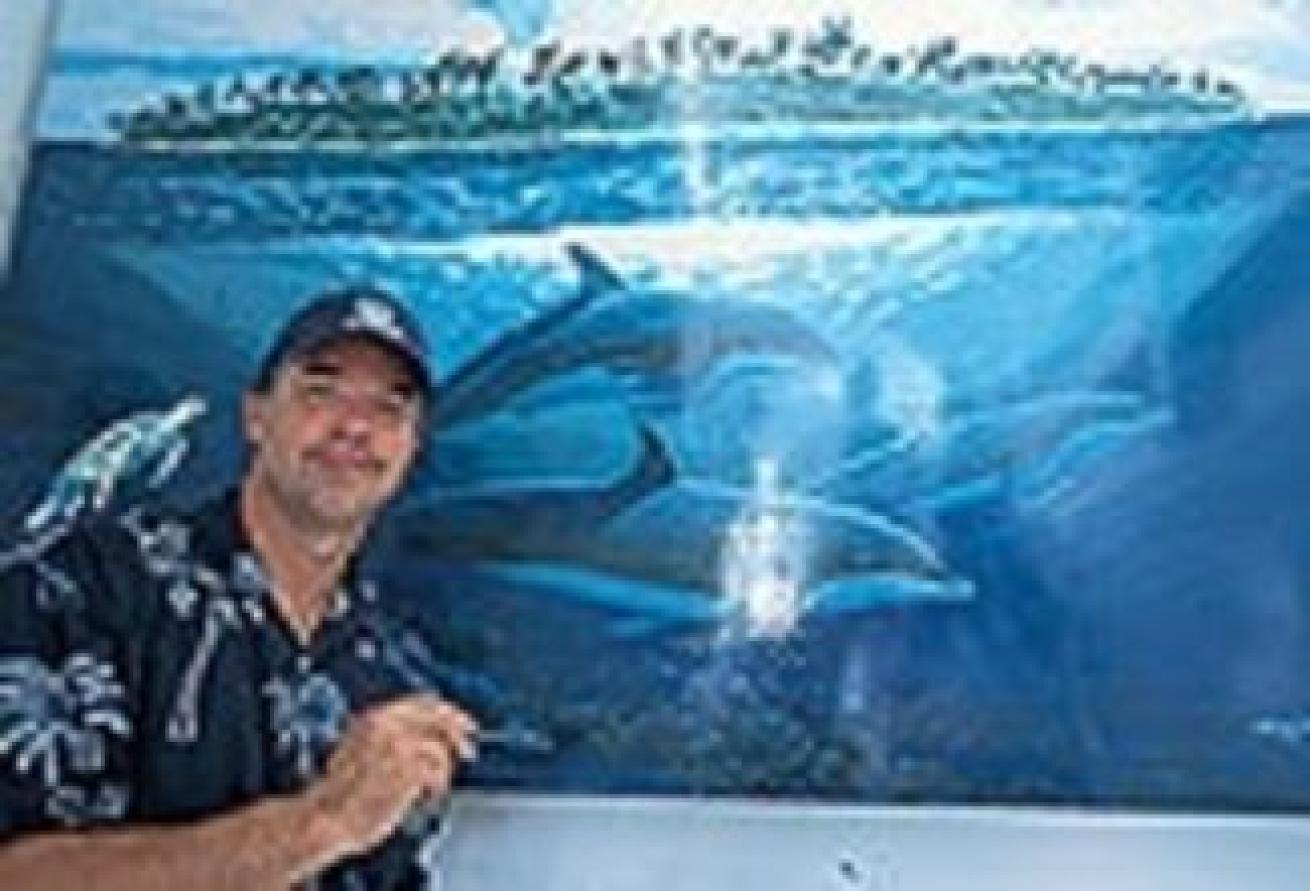
Courtesy WylandWyland
Wyland
Yes, he does have a first name. It's "Robert," but you'll have to go back to his early days in Detroit to find someone who actually used it. Educated at the Center for Creative Studies — a Detroit art school best known for producing auto designers — Wyland visited California and was so moved by his first view of the Pacific that he wanted to spend a lifetime bringing its vibrancy to life. Best known for his "whaling walls" — life-size underwater murals with whales as a focal point — Wyland also creates art and sculpture on a smaller scale, which makes collecting his pieces a little easier, and keeps the buildings graced with his murals from becoming drafty.
Related Reading: What It’s Like to Swim With Humpback Whales
The Educators
Most of the surface of the planet is covered with water. It stands to reason, then, that those who inform us about the underwater world are the ones who teach us about where we live. These five people stand out when we think about diving and educating others to appreciate our water planet.
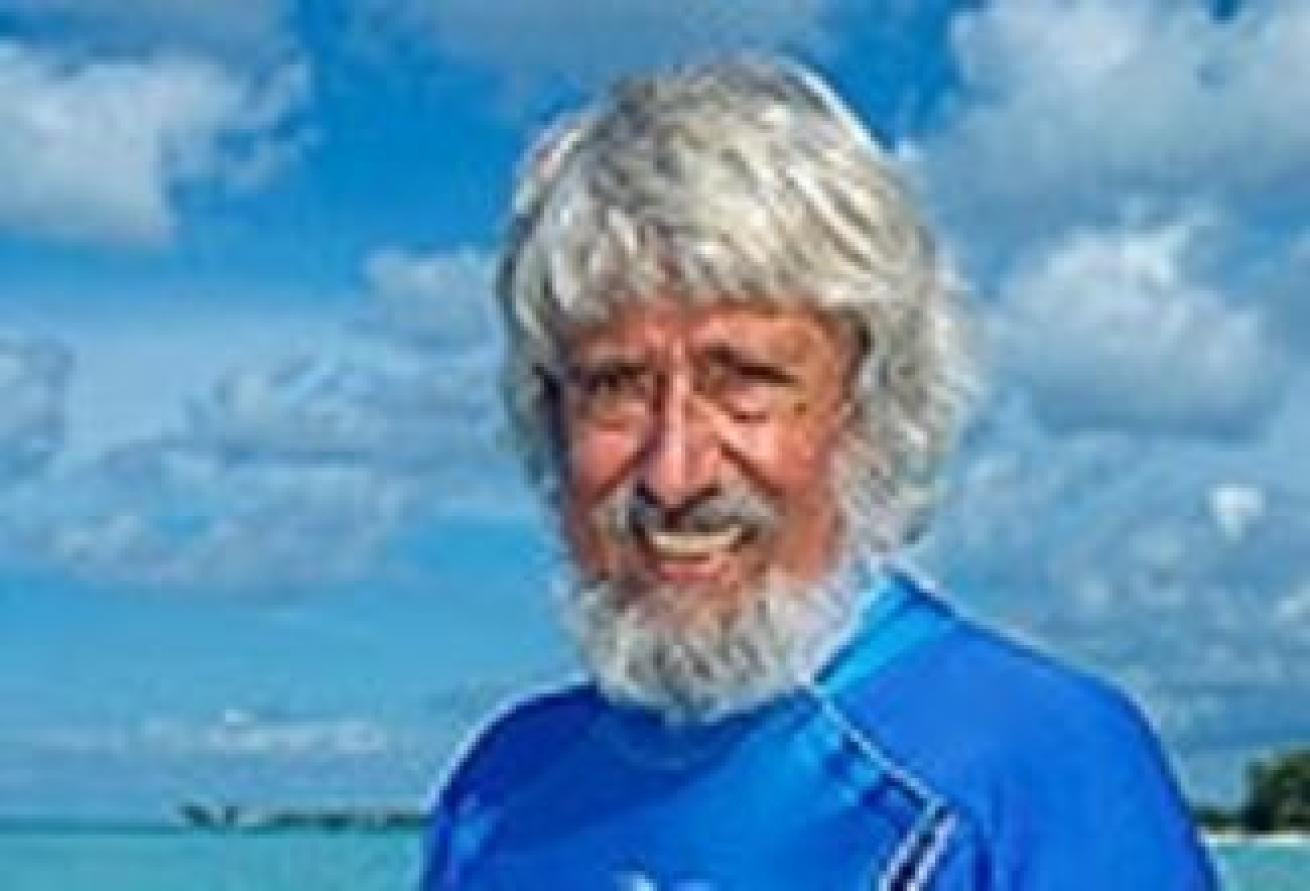
Courtesy Jean-Michel CousteauJean-Michel Cousteau
Jean-Michel Cousteau
The first certified diver in the world, Jean-Michel Cousteau recalls that his training consisted of being "thrown overboard" by his famous red-watch-capped father. Much more than a famous son, Jean-Michel is president of the Ocean Futures Society (a nonprofit marine education and conservation organization), a prolific author, an award-winning filmmaker, a recognized international environmentalist, and the creator of a distinctive ecotourism-oriented resort in Fiji. He doesn't even need a red watch cap to be one of the most recognizable environmentalists in the world.
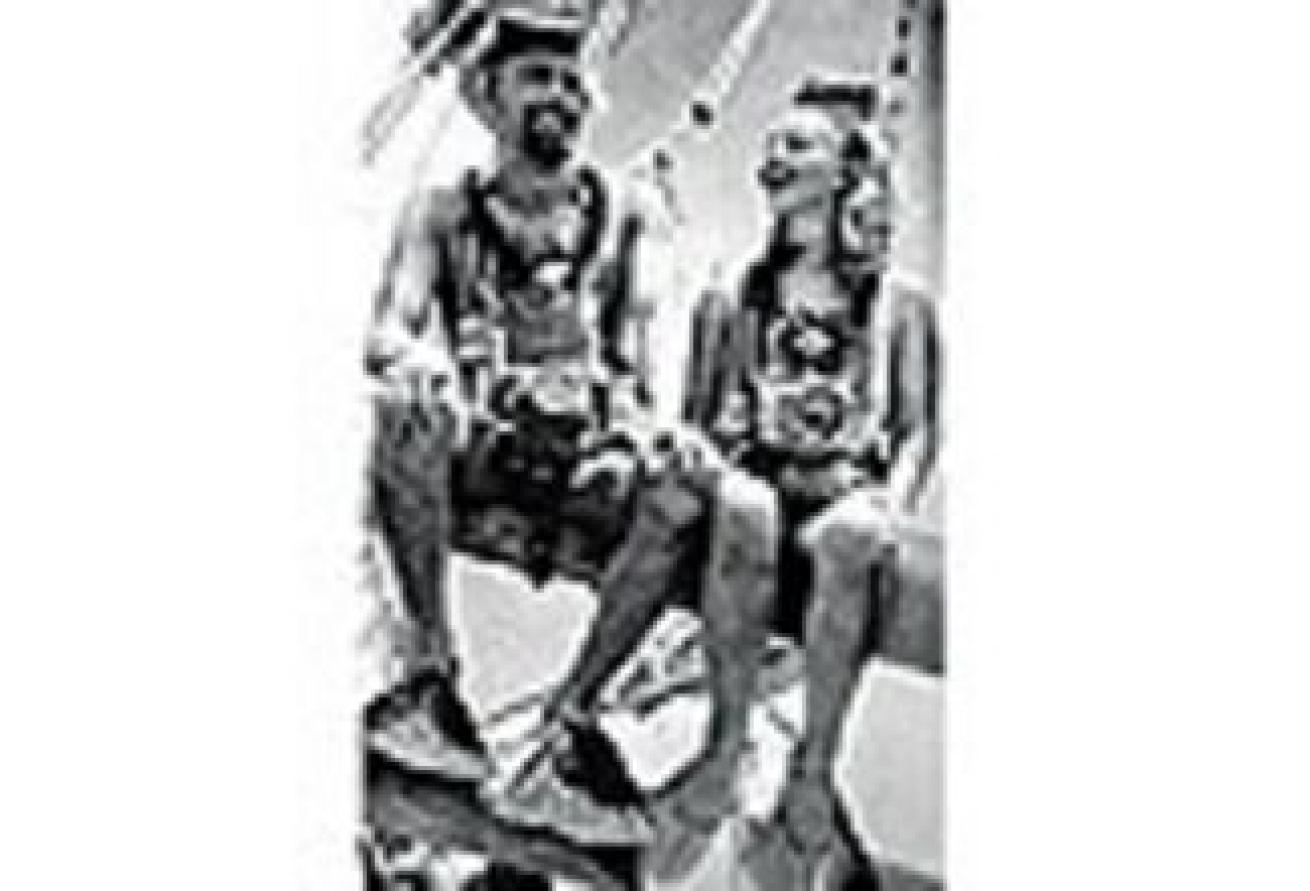
Courtesy Hans and Lotte HassHans and Lotte Hass
Hans and Lotte Hass
A couple who adopted the sport of diving in its infancy, the Hasses were captivated by marine hunting and developed it into a new form of oceanography — one that depended on diving and firsthand observation for its theories, as opposed to dredge-trawling. That in turn led them to pure science and the development of energy theories, and ultimately with a comparison of marine-life and human behavior, including a comparison of shark behavior and management (a comparison that would, to most businesspeople, seem in retrospect to be obvious). Pioneers in every sense of the word, Hans and Lotte Hass embodied the spirit of diving when it was just beginning to capture the fascination of people around the world.
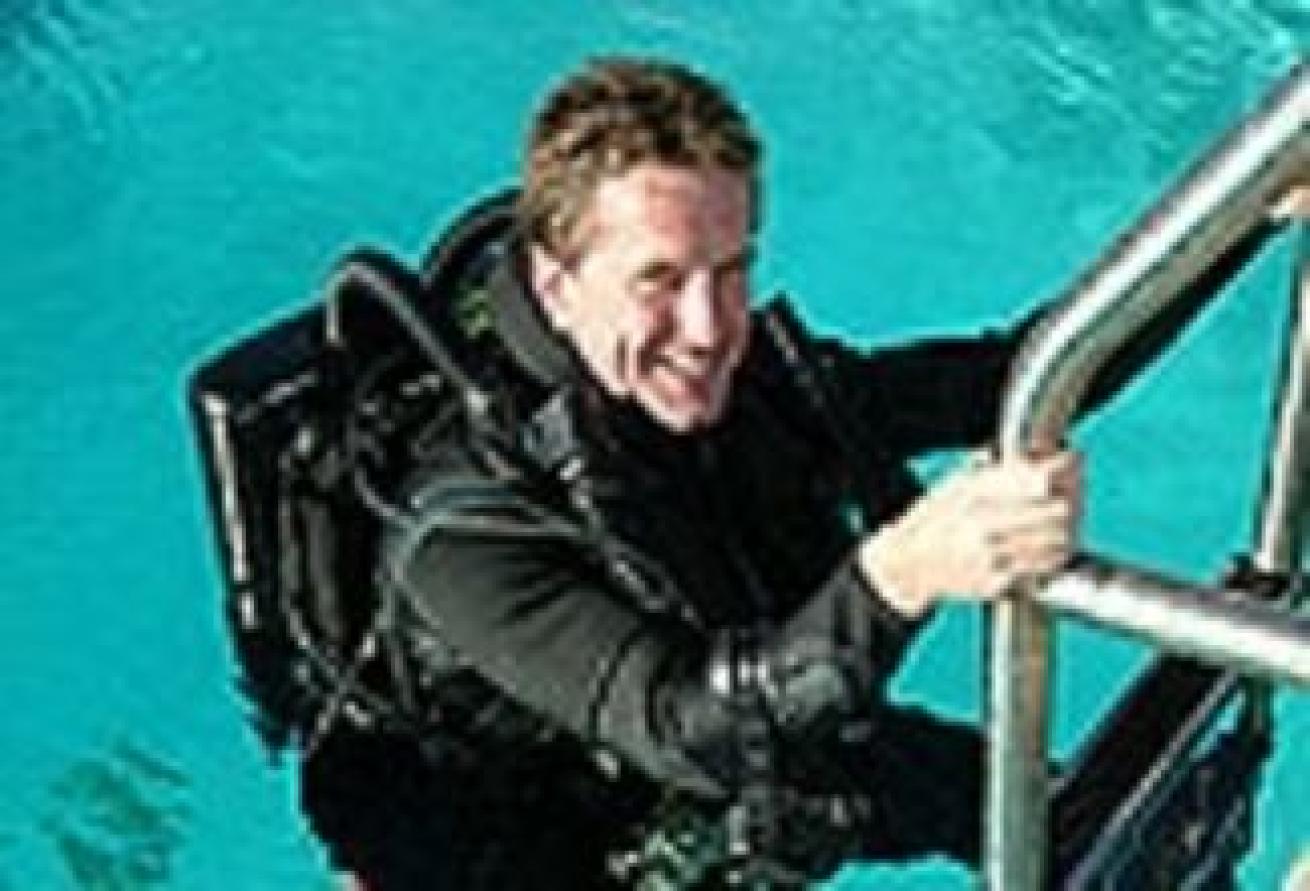
Courtesy Drew RichardsonDrew Richardson
Drew Richardson
First certified as a diver in 1971, Dr. Drew Richardson has logged more than 4,300 dives, personally trained or certified more than 3,000 divers, and since coming to PADI in 1985, has been pivotal in the development of the standards, procedures and materials used to train literally millions people in safe exploration of the undersea environment. He was instrumental in developing both PADI's S.A.F.E. (Slowly Ascend From Every dive) diver program, as well as Project AWARE, was the 1992 DAN/Rolex Diver of the Year, and a 2004 recipient of the DEMA Reaching Out Award. Today, as President and COO of PADI Worldwide, he embodies PADI's keep-divers-diving philosophy and continues to expand the breadth and depth of dive training everywhere.
Zale Parry
In the late 1950s, every little boy in America wanted to grow up to be just like Lloyd Bridges in the television show Sea Hunt, and a few adventurous girls wanted to grow up to be like Zale Perry, whose stunt-diving for the series was a natural outgrowth of her work as a test-diver for major equipment manufacturers. She was instrumental in the development of decompression-chamber treatment for sport-diving injuries, helped found the Underwater Photographic Society, and has encouraged thousands of schoolchildren to pursue their fascination with the undersea world, Today, she encourages that adventurous spirit through an Academy of Underwater Arts and Sciences scholarship that is named after her, and she is one of the foremost authorities on the development and history of sport diving.
Dee Scarr
There once was a time when scuba divers collected black coral as souvenirs, frightened pufferfish so they would inflate for photographs, and posed for their own portraits by sitting on top of brain coral. Dee Scarr changed all that. Her "Touch the Sea" approach to diving — now a PADI distinctive specialty — transformed dive tourism into a gentle discipline: one in which care is taken to leave each dive site as natural and pristine as possible. The author of three books about her approach to eco-diving, Dee Scarr also lectures regularly on the human-marine relationship and continues to draw crowds to her weekly slide shows on the island of Bonaire.
Related Reading: Introduction to Manual Underwater Photography
The Explorers
Star Trek's James T. Kirk was wrong. Space is not the final frontier. We've only rippled the surface when it comes to understanding the seas, and it's people like these who are leading that ongoing effort.
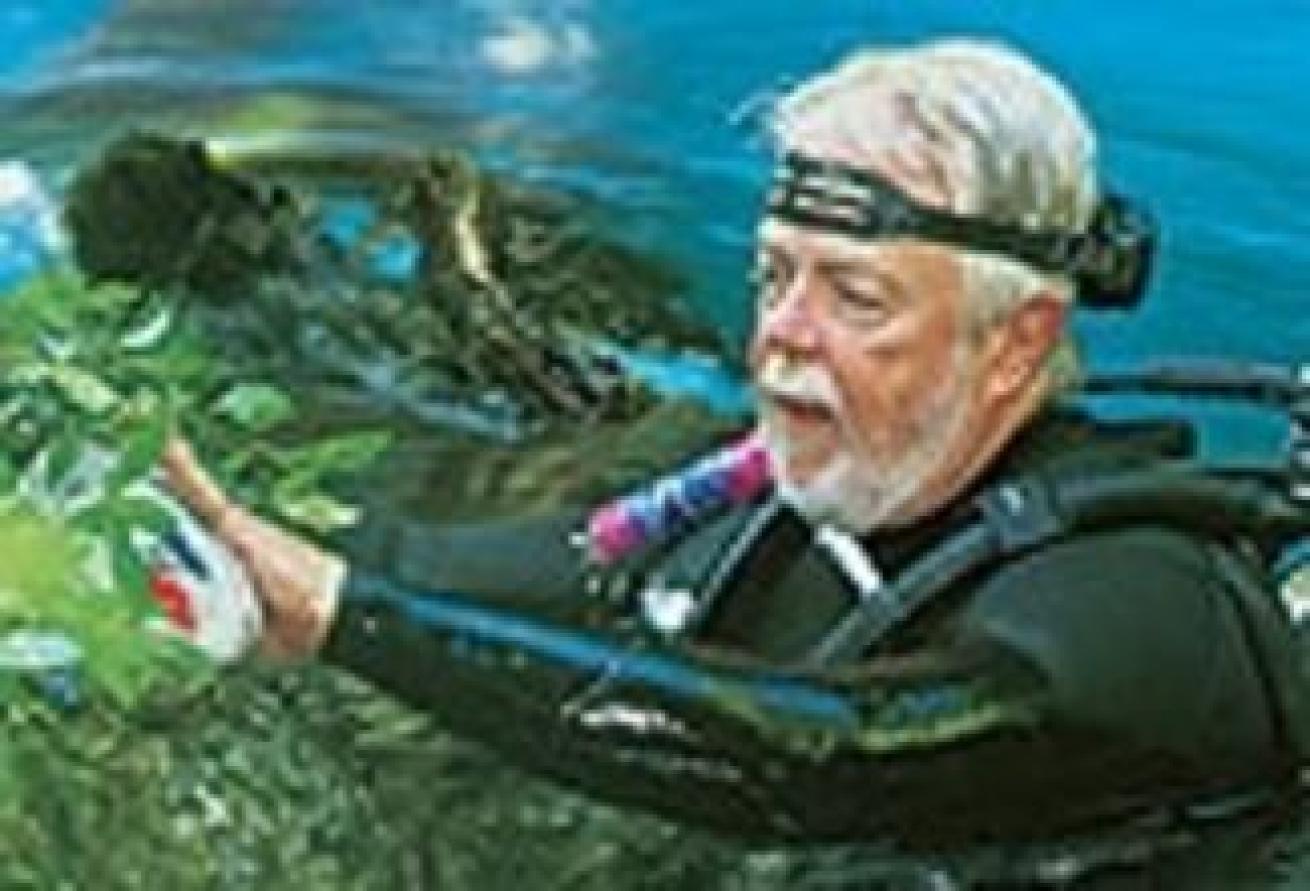
Courtesy Jim BowdenJim Bowden
Jim Bowden
Jim Bowden will be the first to tell you that he is a throwback to an earlier era — a full-time explorer in the tradition of Livingston and Shackleton. With Dr. Anne Kristovich and other members of the Proyecto de Buceo Espeleologico México y América Central, his cave diving expeditions have taken him to Mexico, Belize and Guatemala. He has made more dives past the 500-foot mark than any other person in the world, and holds the current world's record for the deepest accurately measured cave dive, having gone well past 925 feet deep in Zacaton, a cave with measured depths of 1,000+ feet in northern Mexico.
Sylvia Earle
Years ago, a Bonaire divemaster told Sylvia Earle that she couldn't go into the water because she didn't have a certification card. Fortunately, an instructor on the same boat knew who she was and cut her one on the spot. Dr. Earle, a lifelong research diver and holder of several diving records, has a marine-biology vita that rivals that of Jacques Cousteau. She is the former Chief Scientist for the National Oceanographic and Atmospheric Administration, a position that earned her the nickname, "The Sturgeon General." Earle has been Explorer-in-Residence at the National Geographic Society since 1998, was Time magazine's first "Hero for the Planet," and has led more than 50 oceanographic expeditions. Gifted with the ability to present ocean subjects in layman's terms — describing Nassau groupers, for instance, as "the Labrador retrievers of the sea" — Earle is a talented advocate for all things oceanic.
Tanya Streeter
An explorer of a physiological and psychological frontier, Cayman-born Tanya Streeter has been beyond 500 feet of depth — an area only reached by a handful of divers in all of history — and she has done it on a single breath. While she does scuba dive as well, she claims that she is "not very good at it; I'm lousy with equipment and I forget to breathe." Only months after deciding to compete in breath-hold diving events, she broke both the Women's and the Men's Freediving World Records, setting a total of eight records in all, including an Unlimited dive off the Turks and Caicos Islands to a depth of 122 meters (525 feet). Described by Sports Illustrated as the "word's most perfect athlete," Streeter brushes off the praise, pointing out that world-record freediving is very much a team sport. She uses her notoriety to promote environmental causes and to further research into apnea and breath-hold diving.
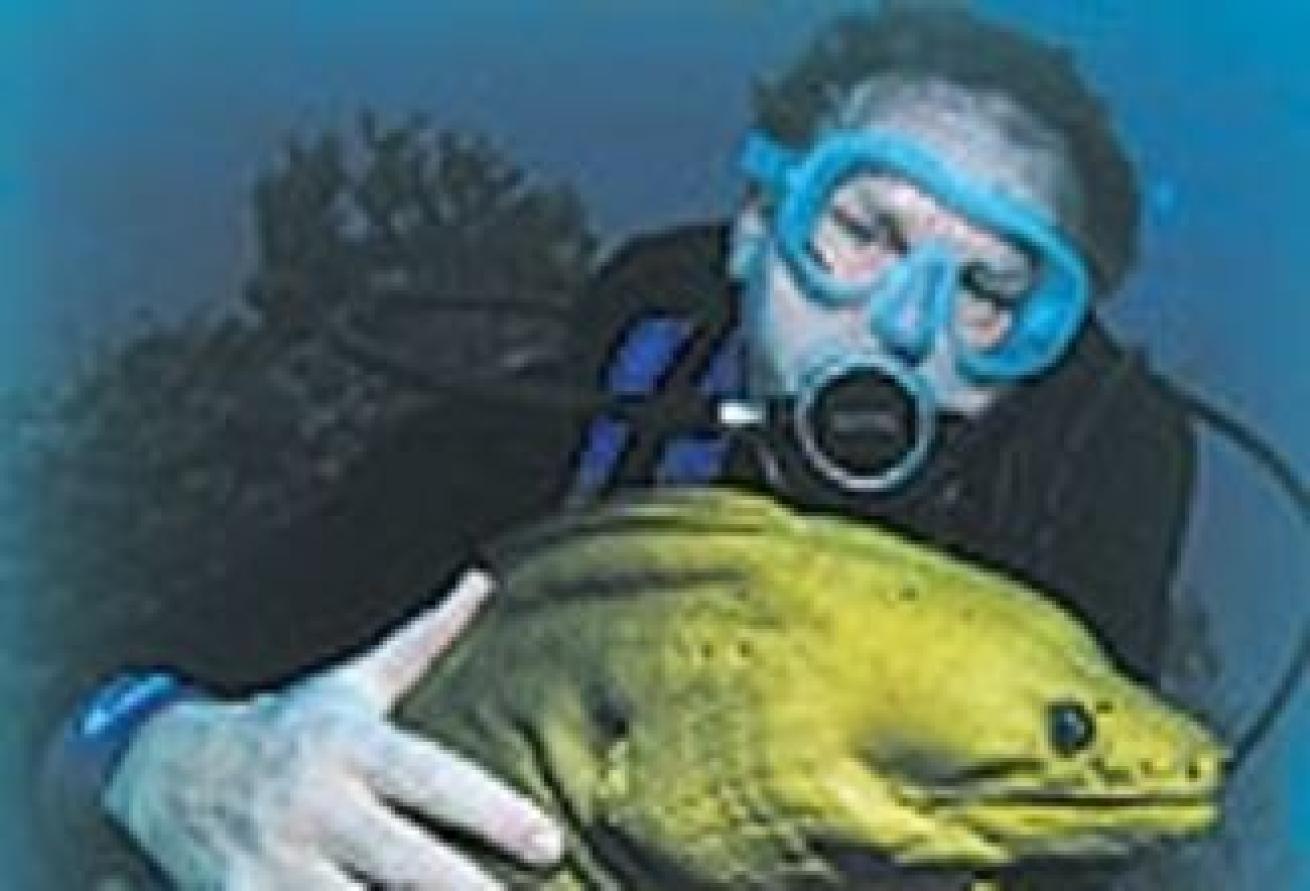
Courtesy Bob HollisBob Hollis
Bob Hollis
An active diver who first got involved in the sport in the late 1950s (when most Americans were diving vicariously by watching Lloyd Bridges on TV), Bob Hollis has devoted decades to diving the Pacific and particularly to exploring the undersea world off Papua New Guinea. He combined his degree in mechanical engineering with an interest in underwater photography, designing and testing a series of underwater housings and other specialized scuba equipment. This in turn led him to found Oceanic, one of the world's premier diving-equipment companies. A member of the Diving Hall of Fame, Hollis has also served as president of DEMA.
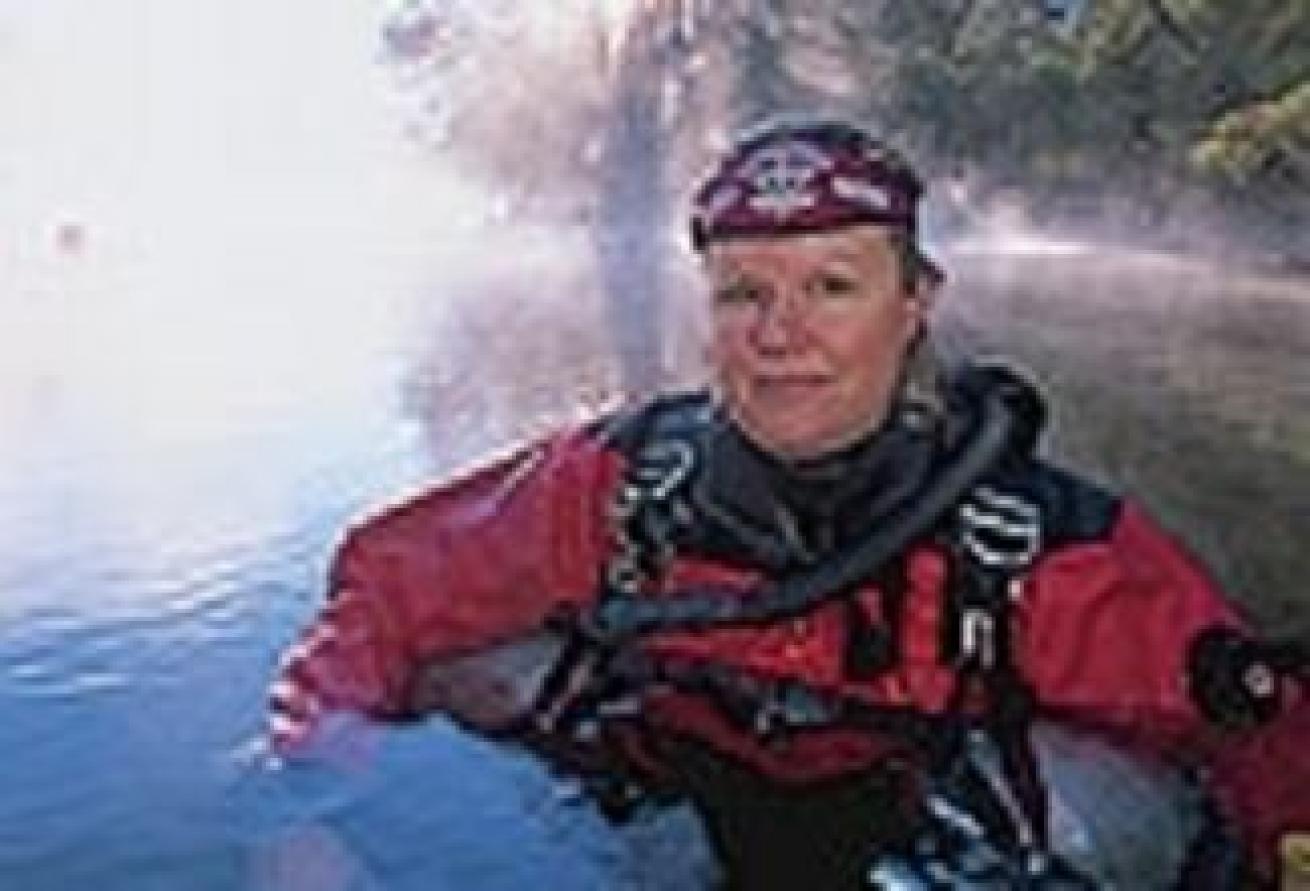
Courtesy Jill HeinerthJill Heinerth
Jill Heinerth
Easily qualifying as one of the top ten cave divers in the world — male or female — Jill Heinerth holds the women's world record for deep cave penetration, and in 2000 was both inducted into the Women Divers Hall of Fame and recognized as Canadian Technical Diver of the Year. A talented writer, photographer and spokesperson for the discipline of cave diving, she has worked, together with Wes Skiles and his Karst Productions team, on a number of breakthrough films, and was Underwater Unit Coordinator for the Sony Pictures feature film The Cave, in which not a single frame of computer-generated imagery was used in the mind-boggling underwater sequences.
Related Reading: Diving for an Arctic Cave Concert
The Historians
The ancients thought of water as the universal solvent, and oftentimes what's submerged is doomed to obliteration unless some explorer is willing to document it before it is gone. When it comes to maritime archaeology, these are the people who first come to mind.
Robert Ballard
A diver since the late 1950s, Dr. Robert Ballard began his study of the undersea world while observing tidal pools near San Diego. He has been moving deeper ever since. Doing much of his work with the Woods Hole Oceanographic Institute (where he started in 1967), he began working in 1973 on a project to find the resting place of the Titanic using a titanium-alloy submersible. This eventually led to ROV exploration using real-time "telepresence" technology and, 12 years after first contemplating the search, Ballard and his team located the world's most famous shipwreck. The recipient of 13 honorary agrees and six military awards, Ballard (a USNR commander and a National Geographic Society Explorer-in-residence) received the National Geographic Society's Hubbard medal in 1996, a fitting cap to the more than 30 honors bestowed on him since 1981. He is currently president of the Institute for Exploration, in Mystic, Connecticut.
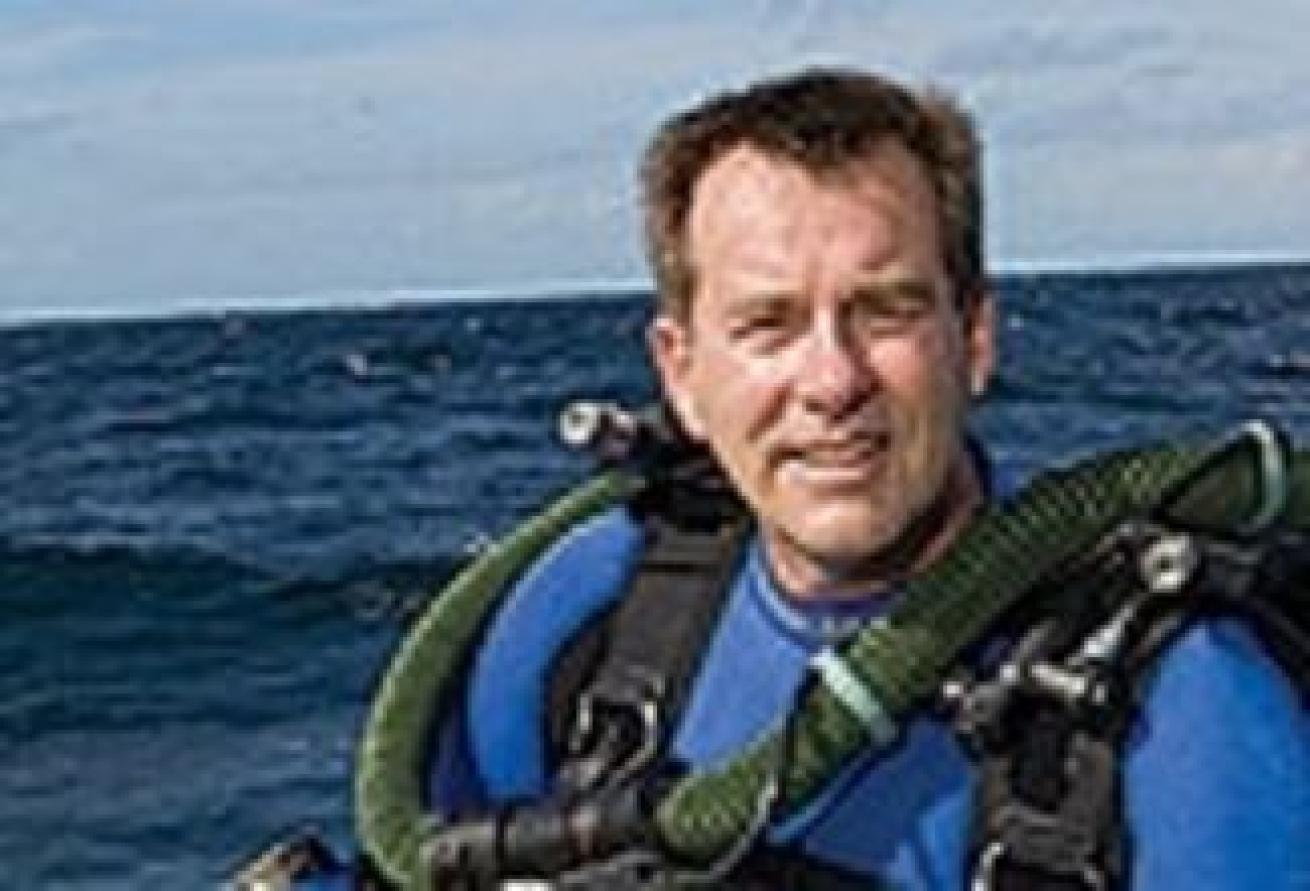
Courtesy John ChattertonJohn Chatterton
John Chatterton
There aren't many wreck divers known to the average person on the street but, thanks to his History Channel series, Deep Sea Detectives, John Chatterton is one of them. Prior to the series, he was also known to armchair adventurers as one of the two principal divers (the other being Deep Sea Detectives co-host Richie Kohler) profiled in Rob Kurson's best-seller, The Shadow Divers — an account of the finding and identification of the German submarine U-569. A dive instructor and a commercial diver by trade, Chatterton has made more than 150 dives on the Andrea Doria, and is easily one of the most respected figures in international wreck diving today.
Clive Cussler
The creator of the wildly successful Dirk Pitt series of action-suspense novels, Clive Cussler quit a lucrative job as a copywriter for a national advertising agency to run a dive shop and write novels about underwater adventures. When not at his keyboard, he is often pursuing his own underwater adventures as the founder and head of NUMA, named after a fictitious government agency in his books, and one of the most successful wreck-hunting organizations in the world. Cussler and NUMA have been responsible for finding the Confederate submarine Huntley, the U-20 (the submarine that sank the Lusitania), the Navy airship Akron and dozens of other wrecks. A national fellow of The Explorers Club and a fellow of the Royal Geographic Society, Cussler has also been awarded the Lowell Thomas Award for his contributions to underwater exploration.
Gary Gentile
The first scuba diver to enter the First Class Dining Room of the sunken Andrea Doria, Gary Gentile is also a leader in the fight to allow non-government divers access to closed shipwreck sites. His 380-foot dive to the German battleship Ostfriesland triggered a virtual explosion in the popularity of deep and technical shipwreck diving, and expanded many wreck-divers' definitions of reachable and diveable wreck sites. The author of more than 41 books, Gentile is an active speaker on exploration and explorers' rights, and continues to pursue his passion for wilderness exploration both under the sea and above.
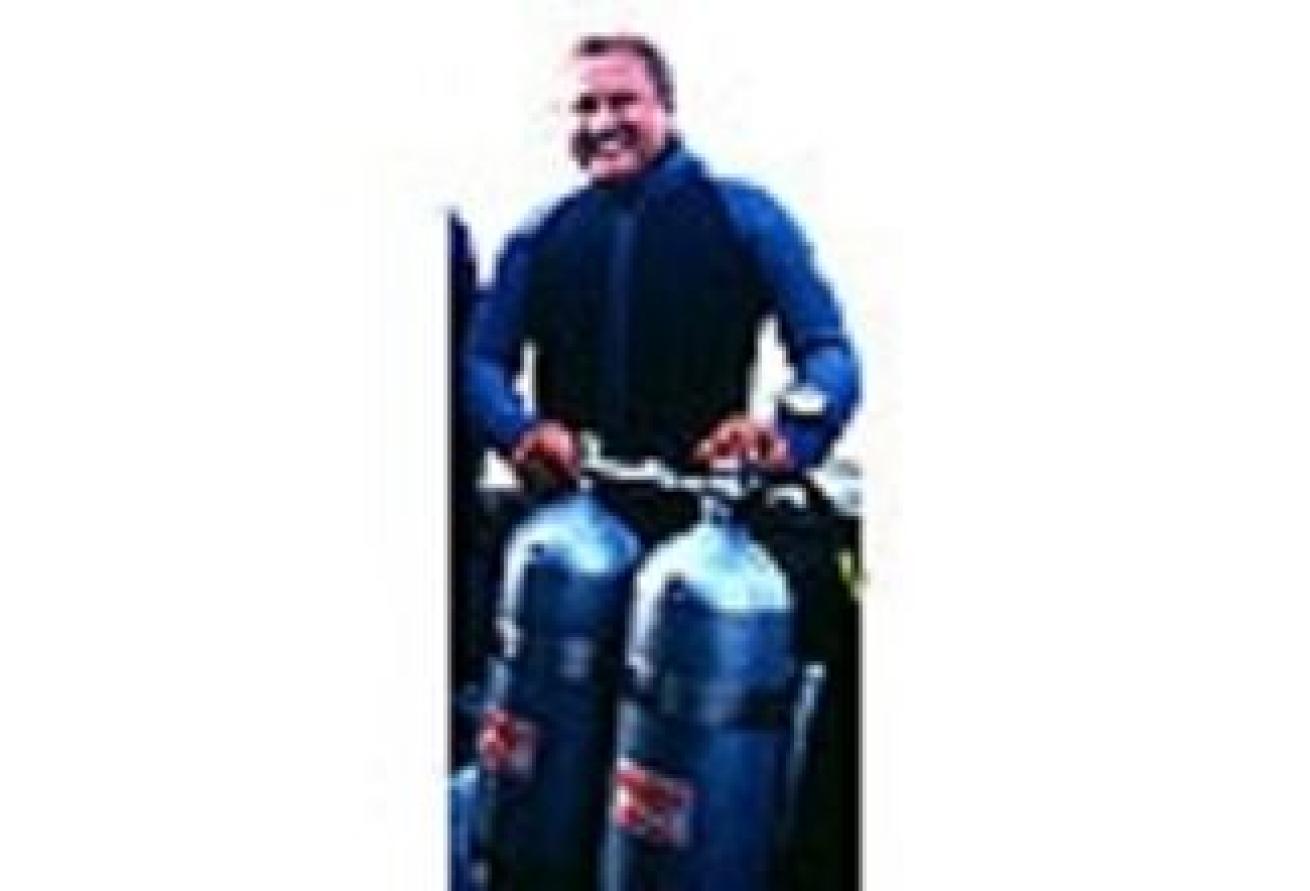
Courtesy Cris KohlCris Kohl
Cris Kohl
Growing up in Windsor, Ontario, Cris Kohl was exposed daily to the spectacle of Great Lakes shipping steaming up and down the Detroit River. But it took "adventure travelogues, pirate movies" and a series of trips to Bermuda and the Florida Keys to get him fascinated with shipwrecks, and over the past three decades he has searched for, found and explored wrecks in all five of the world's oceans and throughout the Great Lakes. This experience taught him that the Great Lakes hold the most well-preserved trove of under-explored shipwrecks on the planet, and his writings to that effect have attracted divers to those inland seas from all over the world.
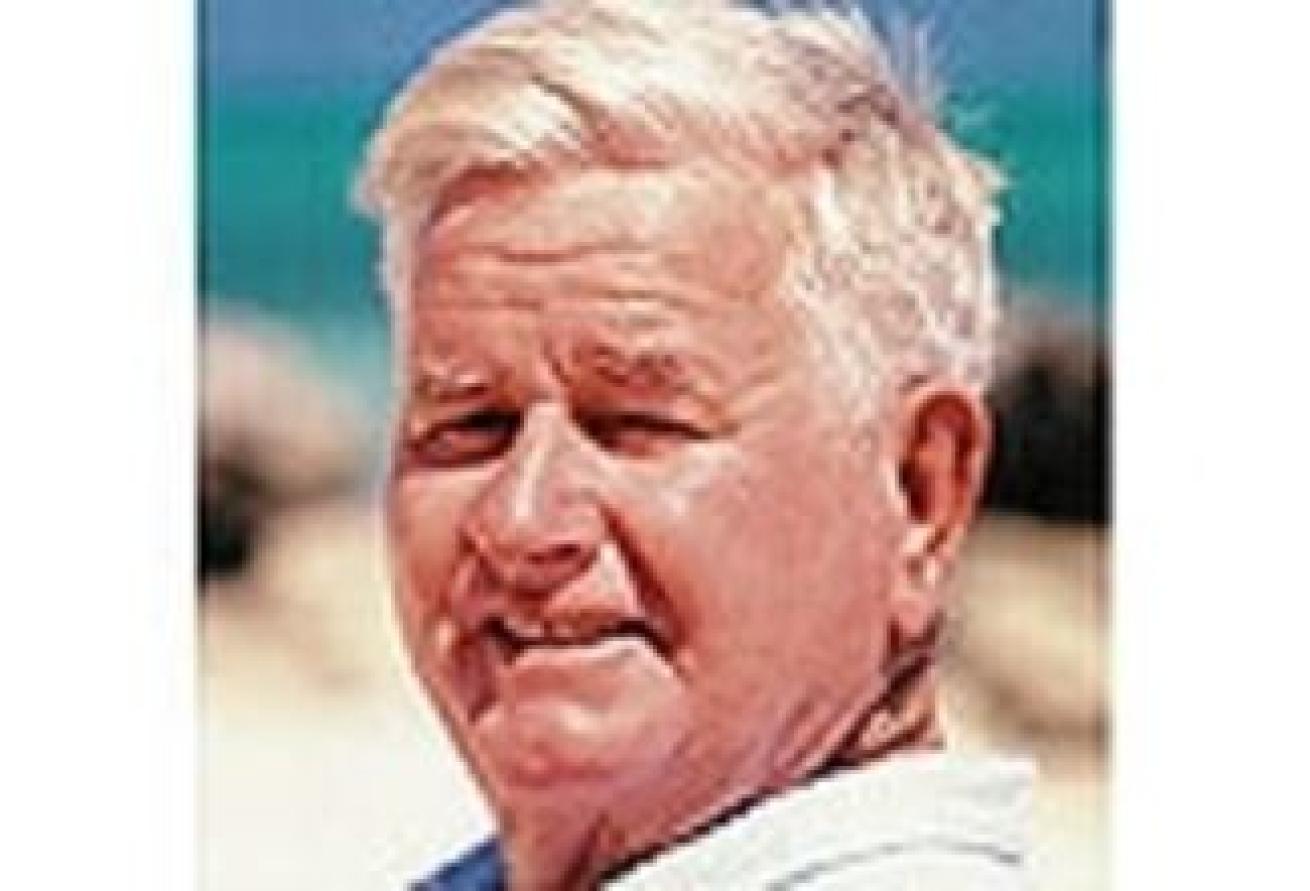
Courtesy Teddy TuckerTeddy Tucker
Teddy Tucker
Peter Benchley, author of The Deep, once introduced Teddy Tucker by saying, "Teddy has brought the world to Bermuda and Bermuda to the world." In the world of shipwreck diving, that is certainly true. Teddy — the inspiration for the character Romer Treece in The Deep — found and explored more than 100 historic shipwrecks in the waters around Bermuda, was one of the developers of the widely used grid system for mapping and exploring underwater archaeological sites, and once taught marine archaeology for the University of Maryland. Teddy Tucker was the explorer most responsible for Bermuda's reputation as the "shipwreck capital of the world." His numerous honors included membership in the Explorers Club and the Hellenic Institute of Marine Archaeology, a Distinguished Service award from the Underwater Society of America, the Lowell Thomas Award, and the Member of the Most Excellent Order of the British Empire medal, presented to him by Queen Elizabeth II in March of 1994.

